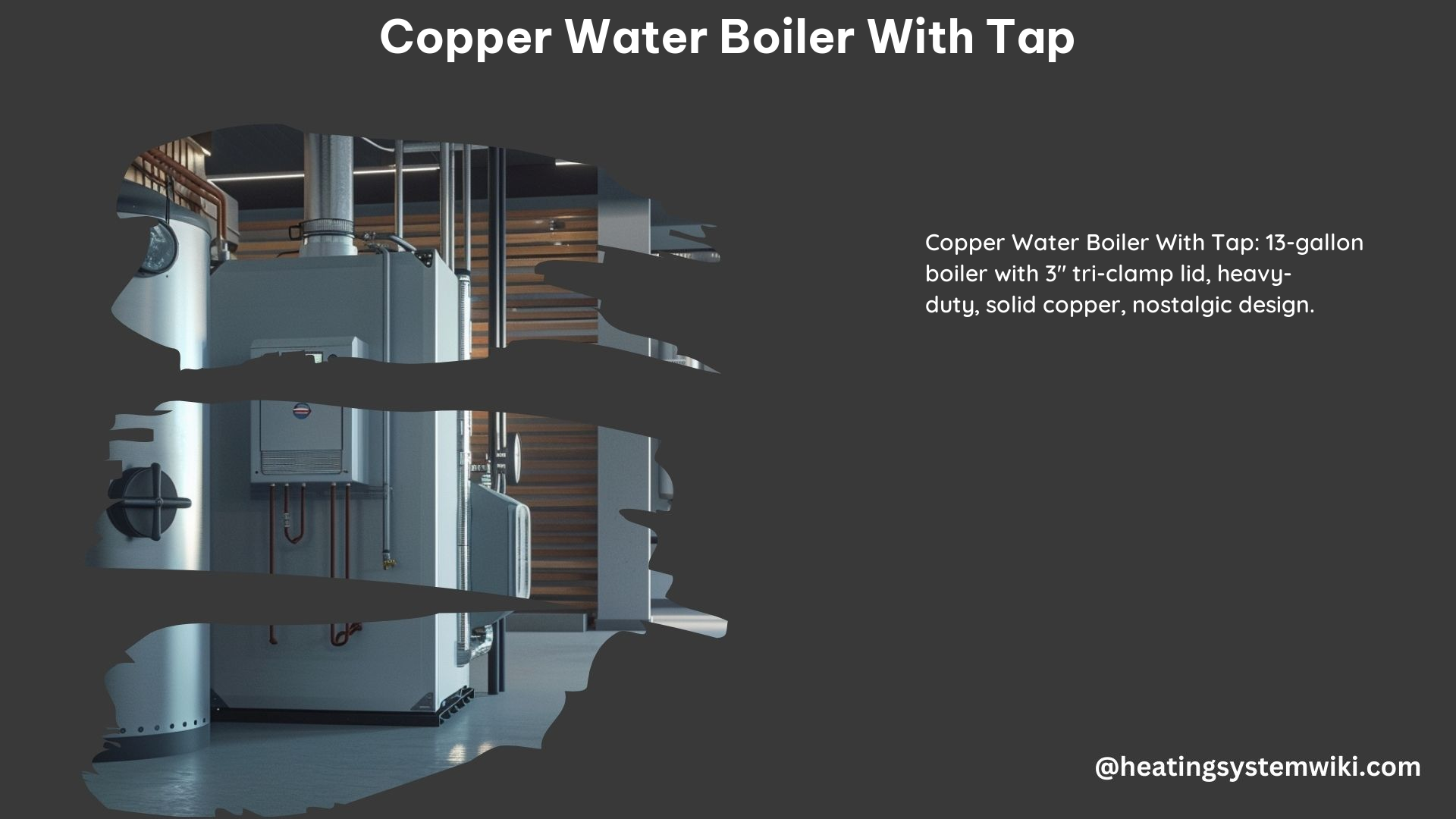Copper water boilers with taps are a popular choice for various applications, from home brewing to commercial food preparation. However, to ensure the longevity and optimal performance of these boilers, it is crucial to understand the impact of water quality and the technical specifications that govern their construction and usage.
Type of Water: The Key to Preventing Mineral Buildup
Hard Water: The Nemesis of Copper Boilers
Hard water, which is characterized by high levels of dissolved minerals like calcium and magnesium, can wreak havoc on copper water boilers. As the water heats up, these minerals can precipitate and form scale deposits on the inner surfaces of the boiler. This scaling can reduce the boiler’s efficiency, restrict water flow, and even lead to premature failure of the heating elements or other components.
Soft Water: The Ideal Choice
To mitigate the risks of mineral buildup, it is highly recommended to use soft water with your copper water boiler. Soft water has a lower mineral content, which significantly reduces the likelihood of scale formation. Soft water can be achieved through the use of water softening systems or by sourcing water from naturally soft water sources.
Water Softening: The Key to Longevity

Importance of Water Softening
Using a water softener in conjunction with a copper water boiler connected to a tap is a crucial step in ensuring the longevity of the system. Water softeners work by removing the dissolved minerals from the water, effectively preventing them from accumulating inside the boiler and causing scaling.
Types of Water Softeners
There are several types of water softeners available, each with its own advantages and considerations:
– Ion exchange water softeners: These are the most common type, using resin beads to exchange calcium and magnesium ions for sodium or potassium ions.
– Reverse osmosis water softeners: These systems use a semi-permeable membrane to remove dissolved minerals from the water.
– Magnetic water softeners: These devices use a magnetic field to alter the structure of the minerals, preventing them from forming scale.
Technical Specifications: Understanding the Copper Boiler Construction
Copper Pipe Types
When it comes to hot water heating, the most commonly used copper pipe types are:
– Type M: This is the thinnest and most cost-effective option, often used in residential and light commercial applications.
– Type L: Thicker than Type M, Type L copper pipe is commonly used in heavy commercial or industrial applications where higher pressure and flow rates are required.
– Type K: The thickest of the three, Type K copper pipe is typically used for underground water services or other applications where higher durability is needed.
Boiler Construction Features
Copper water boilers can be constructed with various features to enhance their functionality and versatility:
– Tri-clamp lids: These sanitary-style lids provide easy access for cleaning and maintenance.
– Side ports: Additional ports on the side of the boiler can be used for features like drain valves, heating elements, or temperature/pressure gauges.
– Drain valves: Strategically placed drain valves allow for easy and complete draining of the boiler for cleaning or maintenance.
As an example, a 13-gallon copper whiskey distillation boiler may feature a 2-inch port at the bottom for a drain valve and heating element, allowing for efficient draining and heating of the water.
Maintenance and Monitoring: Ensuring Long-Term Performance
Regular Cleaning and Descaling
To prevent mineral buildup and maintain the optimal performance of your copper water boiler, it is essential to regularly clean and descale the unit. This can be done using specialized descaling solutions or by following the manufacturer’s recommended maintenance procedures.
Continuous Water Quality Monitoring
Closely monitoring the water quality and adjusting the water softening system as needed is crucial. Regularly testing the water for hardness, pH, and other relevant parameters can help you identify any changes in water quality and take appropriate action to maintain the boiler’s efficiency and lifespan.
By understanding the importance of water quality, the role of water softening, and the technical specifications of copper water boilers, you can ensure that your copper water boiler with a tap provides reliable and long-lasting performance for your specific needs.
